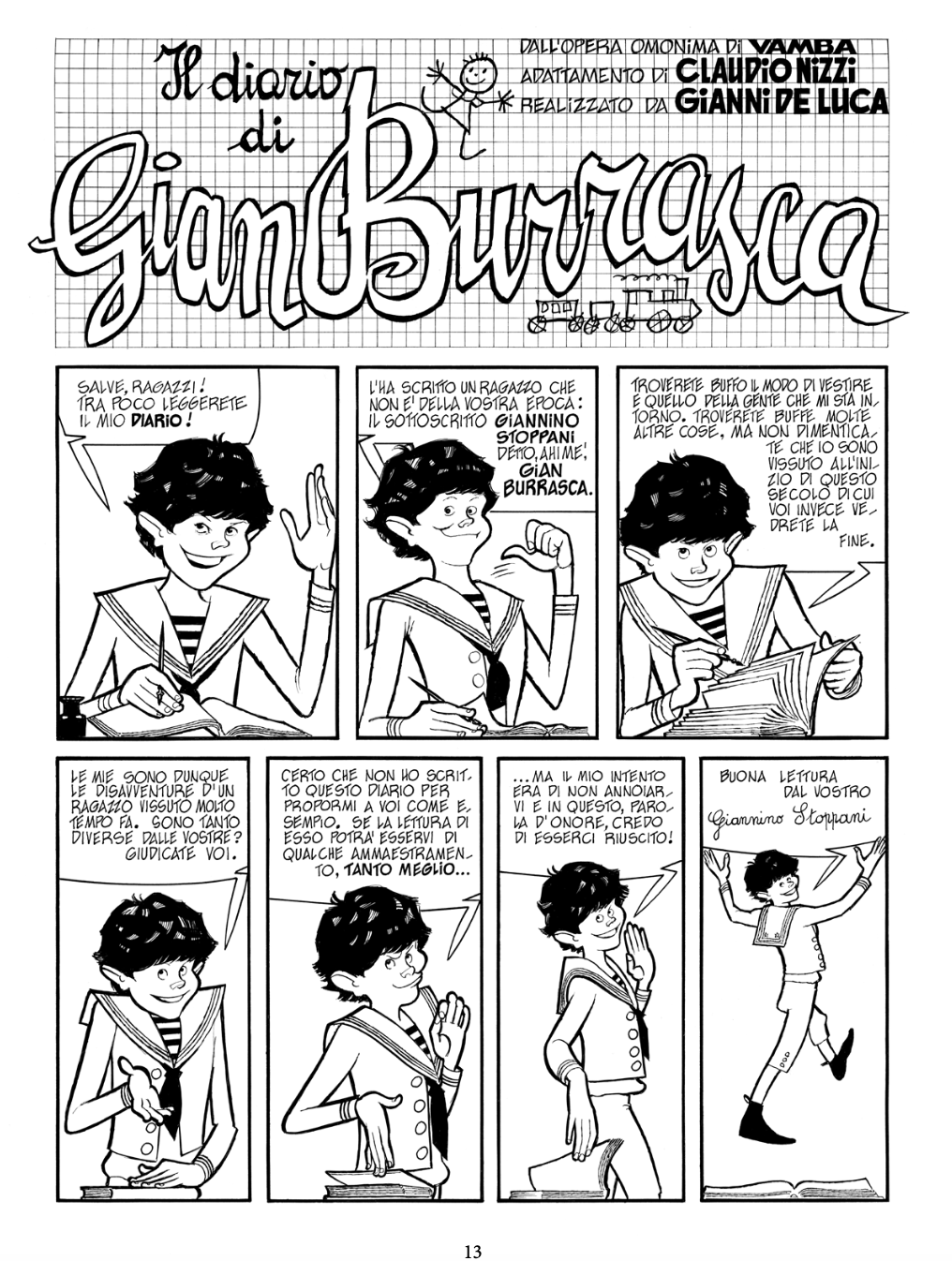
Gianni De Luca (Gagliato, January 27, 1927 – Rome, June 6, 1991) was one of the greatest innovators of Italian and international comics. A refined and visionary illustrator, he revolutionized the language of comics with a radically new graphic and narrative approach, blending theatrical dynamics with cinematic rhythm, in a unique and highly modern synthesis.
His true revolution was the invention of a fluid and choreographic narration, where the characters move continuously between the panels, crossing the space of the page as if on a stage. This technique, which breaks with the traditional grid of comics, allows the reader to experience the action as a single moving scene. Works such as Il commissario Spada, I giorni dell’Impero and especially the Shakespearean trilogy (Hamlet, The Tempest, Romeo and Juliet) are clear evidence of this: a new way of storytelling, where form is an integral part of the narrative.
His work profoundly influenced later authors, including Frank Miller, who cited De Luca among his inspirations. Miller recognized in the Italian master a forerunner in the use of space and movement in comics, calling him “an author who understood time in comics better than anyone else.”
The relevance of Gianni De Luca lies in his extraordinary visual modernity and his ability to address universal themes with a timeless style. In an era when comics are increasingly experimenting with direction, visual storytelling, and hybridization between media, De Luca appears as a forerunner. His pages seem designed for the language of the contemporary graphic novel, and even today they offer fresh ideas for authors and artists who want to go beyond the traditional boundaries of visual storytelling.
Color
Gianni De Luca is best known for his refined use of black and white, but color, when present in his works, is never purely decorative: it is a narrative language. In his most iconic works, such as Il commissario Spada, published in “Giornalino”, De Luca often used a limited palette, sometimes imposed by editorial constraints, but always with a strong theatrical and dramatic sense.
When color fully enters his work – for example in I giorni dell’Impero or in some pages of the Shakespearean trilogy – De Luca uses it with an emotional and symbolic function: to highlight a temporal transition, differentiate narrative planes, or enhance the tension of a scene. It is never a filler: it is part of the visual direction.
His ability to conceive the page as a scenic space, where color becomes light, atmosphere, time, brings him closer to painting and theater than to the serial tradition of comics. In this sense, here too lies his modernity: he anticipates the use of color as a narrative structure, as many contemporary graphic novelists would later do.
In short, for De Luca color is not an accessory, but a directorial gesture, and when he uses it, he does so with the same boldness with which he breaks the grid of the panels.
In summary, Gianni De Luca is not just a historical figure in Italian comics: he is an author still alive in the forms and thoughts of modern comics.
Giovanni E. Audino
Graphic Designer
Graphic novel enthusiast












